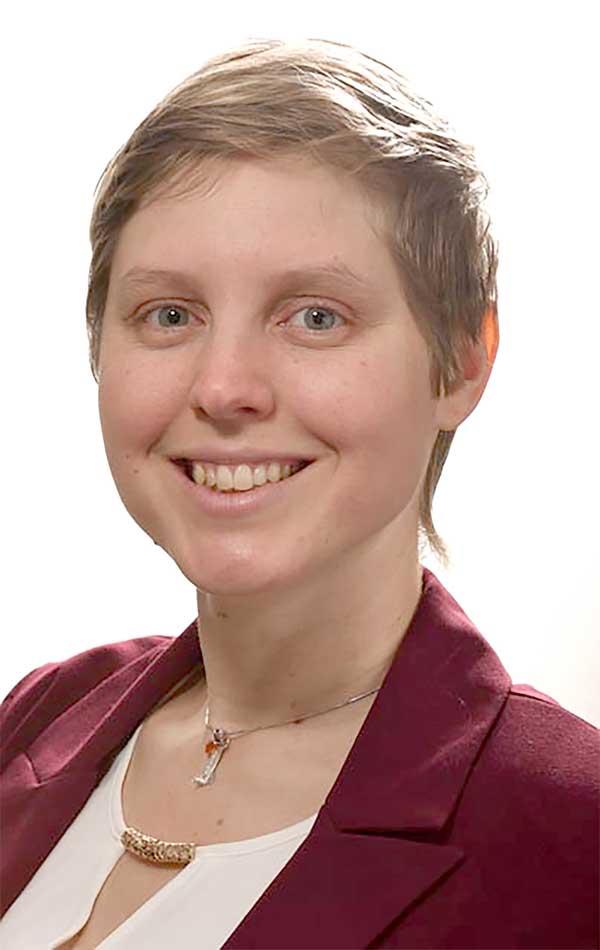242 Days that Changed My Life
UI alumna and “astro-not” Sophie Milam gave eight months of her life to NASA to help future astronauts adjust to life on Mars.
When I was 26 years old, I participated in a study funded by NASA and run by the University of Hawaii. It lasted eight months and studied crew cohesion in conditions of extreme isolation and confinement. Our gender-balanced six-person team was the third iteration of the Hawaii Space Exploration Analogue and Simulation (HI-SEAS), led by Commander Martha Lenio, Ph.D., of Waterloo, Canada.
So what was NASA doing in Hawaii with six people who chose to be confined together for 242 days? Simply put, they were trying to figure out how to design a team that could survive and thrive on a mission to Mars. Countless hours have been — and will be — spent studying the mechanics of human travel to Mars. HI-SEAS also contributes to the research that will one day send people to Mars, but it focuses on the mental, rather than the mechanical, dimension of the challenge.
Inside the two-story, 36-foot-diameter dome, all contact with the outside world had a 20-minute communication delay, 95 percent of our food was dehydrated or freeze-dried, our rooms were the size of a large dining table, and we had only one window. When we went outside on Extra Vehicular Activities (EVAs), we wore mock spacesuits and were never exposed to direct sunshine or wind. Things were definitely different than typical life on Earth.
While the lava quarry landscape around us was as Martian as possible, our days were fairly normal. Five days a week we would wake up, work on our personal research, exercise, have dinner and spend the evening hanging out with our dome homies — or “domies.” On weekends we played games, went outside on fun EVAs and had personal time. All of the dome’s energy came from stored solar power and some of our most trying times were when we had only enough reserve power for mission critical systems — like toilet ventilation and biological sample preservation.
Worse than the cold and dark, low-power days was the eventual decay of our social system. During the last two months of our mission, the crew began to with-draw from group activities and restrict our interaction; the last couple weeks were the most stressful of my life to date. Most of us, myself included, learned more about ourselves during those eight months than during the rest of our lives combined and were forced to confront many of our own personal demons. Our experiences affect us to this day. We returned a bit paler, but also with the knowledge that our sensitivities to Earth were more than just skin deep. Before the mission, I would never have classified myself as claustrophobic, but during an EVA, I muscled my way through an incredibly intense bout of claustrophobia inside one of the mock spacesuits. After getting out, I moved to a town of 200 people in northern Idaho and still, 18 months later, do not feel at ease in large cities. Every day I focus on listening, understanding and relating to the people around me. I strive to have a positive impact on my community in the Silver Valley through informal science outreach.
During the mission, I realized that I would probably be too old to fulfill my dream of joining the first mission to Mars. However, rather than dampening my spirits, this realization made me more deter-mined than ever to complete the mission and provide data for the researchers. I take pride in the knowledge that because “AstroNots” like Martha Lenio, Zak Wilson, Neil Scheibelhut, Allen Mirkadyrov, Jocelyn Dunn and I chose to give eight months of our lives to HI-SEAS and NASA, future Mars astronauts will be made stronger by our experiences.
• Sophie Milam received her master’s degree in mechanical engineering from the College of Engineering while spending eight months in a two-story, 36-foot-diameter geodesic habitat as part of NASA’s Hawaii Space Exploration Analog and Simulation. She currently works as a systems engineer for SVL Analytical in Smelterville, Idaho. In 2015, Milam was named to Forbes 30 Under 30 in Science.








